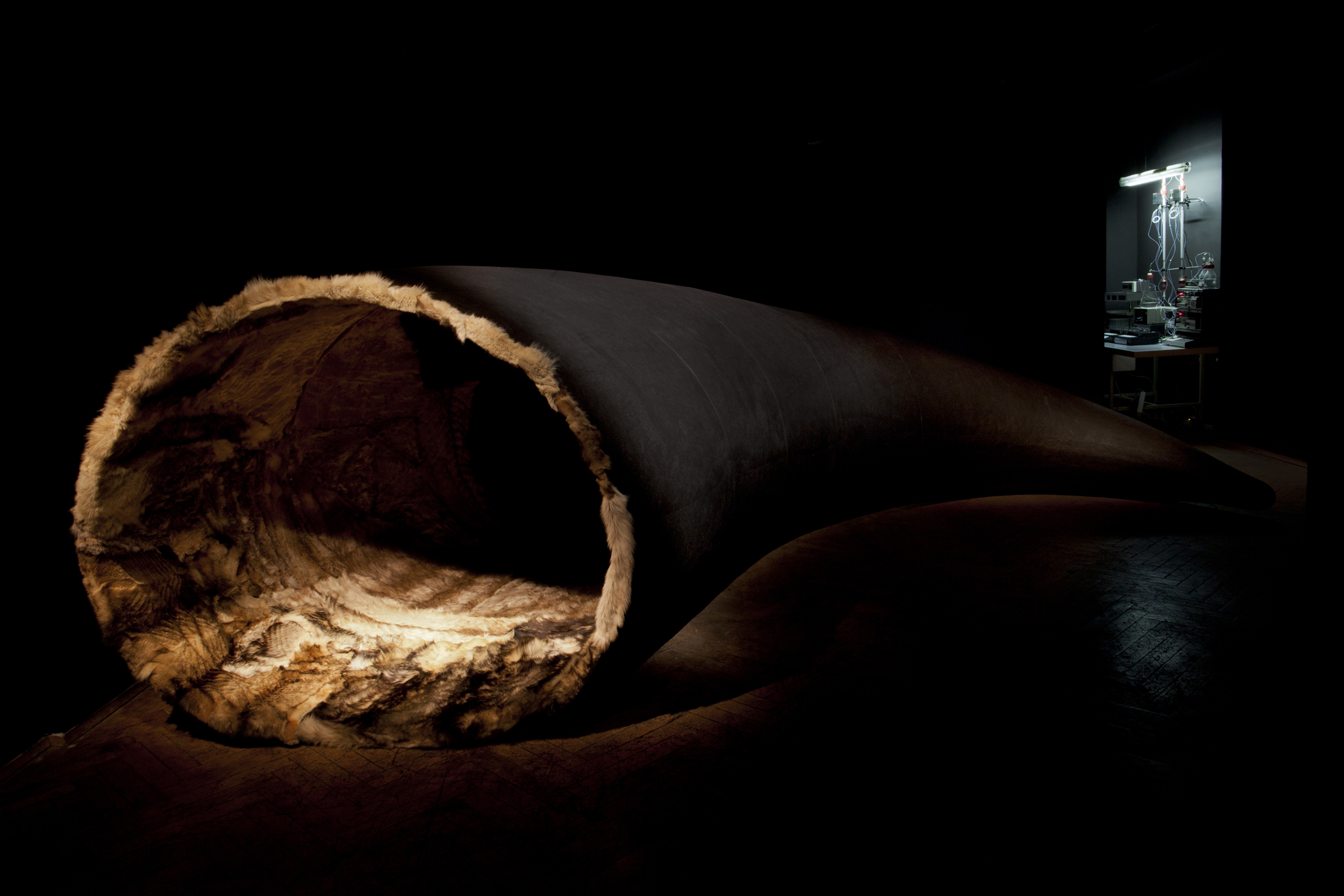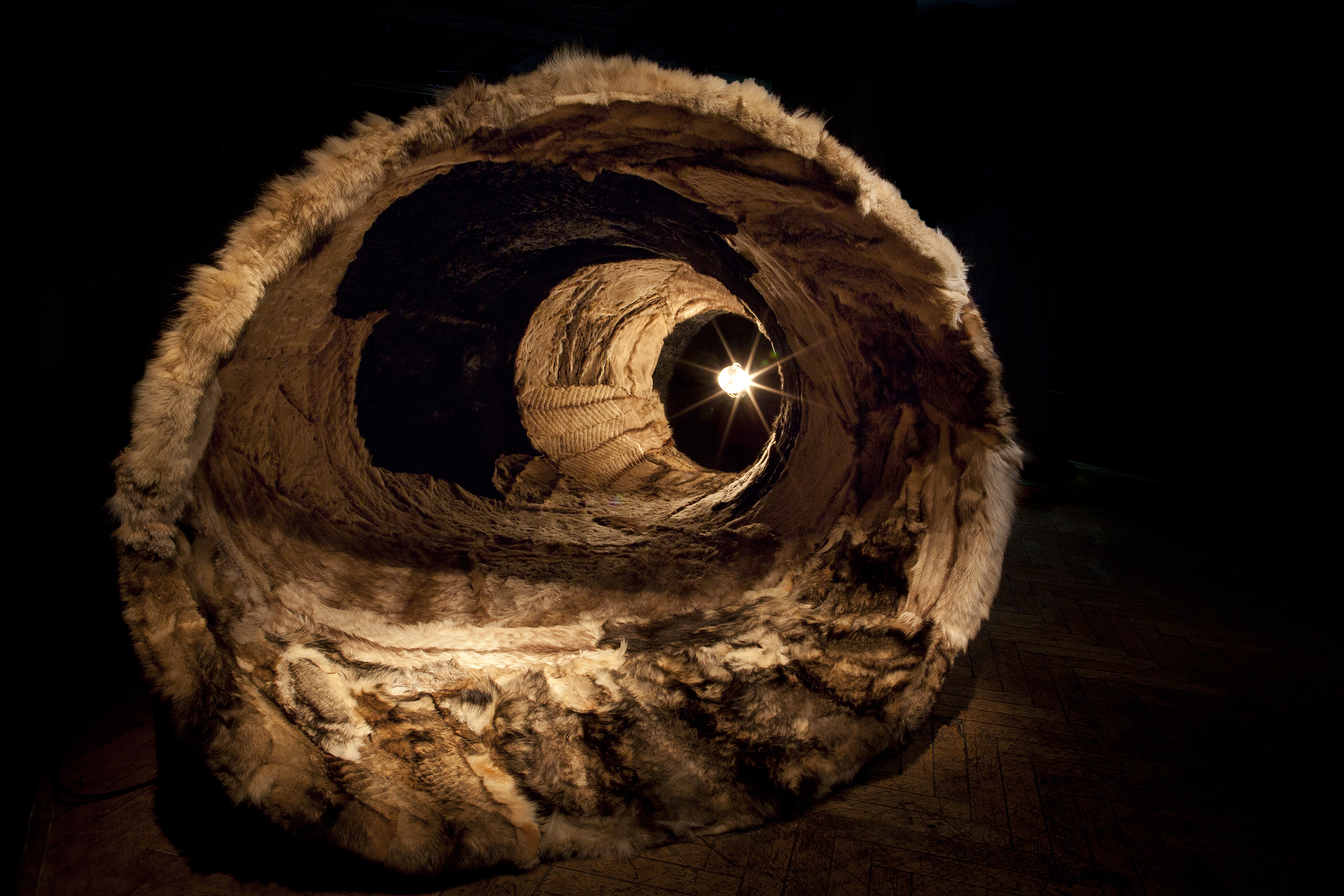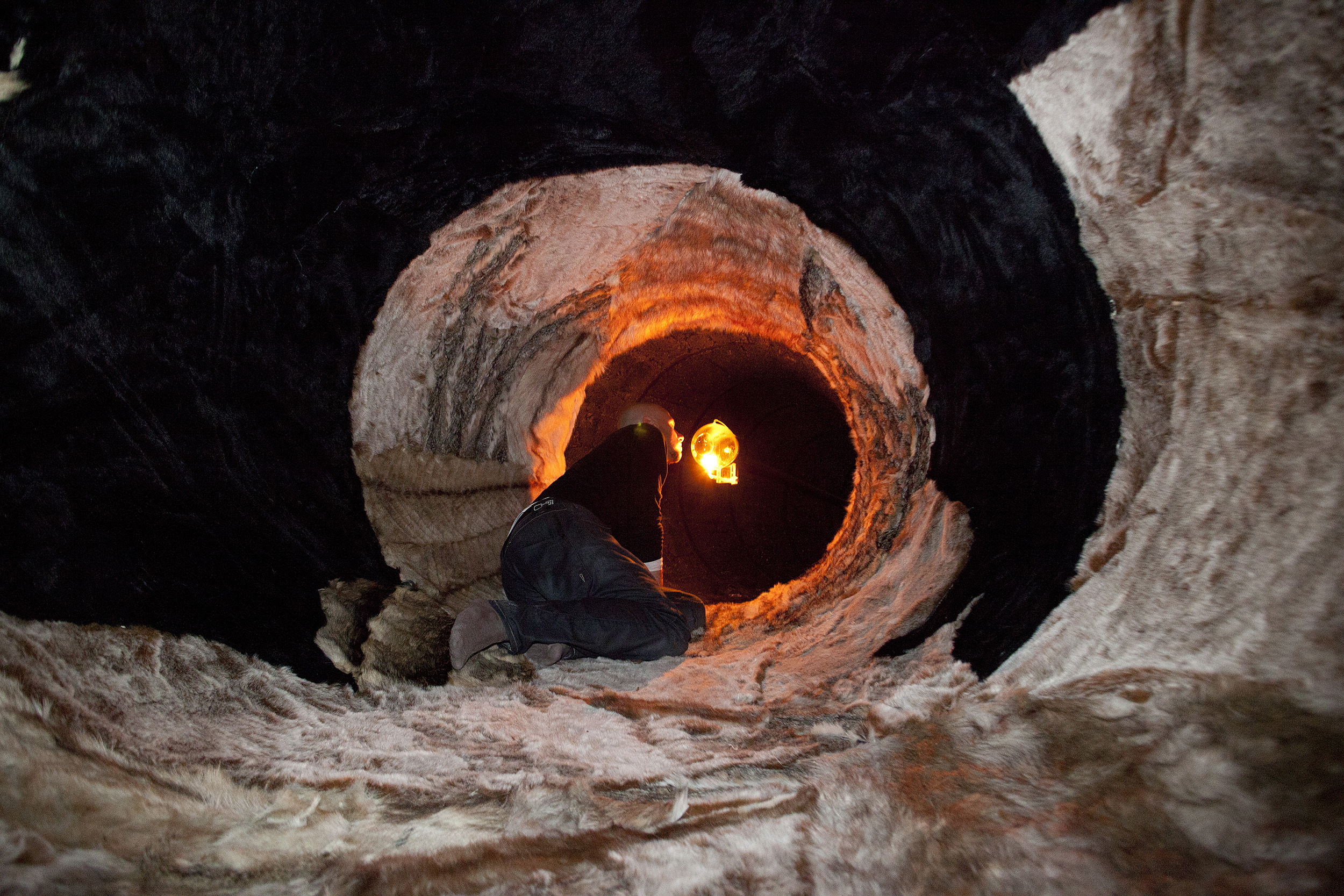ECCE CANIS
2014
Photo: Borut Peterlin
Ecce canis is formally presented as an installation. It is displaying a high-performance, liquid chromatography separation machine, used in analytical chemistry to separate, identify, and quantify components in a specific mixture. It is run by pumps, which pass a pressurized liquid solvent containing the sample mixture through a column. In our case, there are two columns, filled with stationary gel separation media and platelets rich plasma fractions. These contain some serotonin, and have been isolated out of blood samples from me and from my dog companion, a Scottish Border Collie, called Byron. After collecting serotonin fractions, we transformed these into the odour of Ecce canis.
As a juxtaposition to the laboratory there is an immersed living environment, a spherical cave that suggests a paraphrase of living in caves at the beginning of the wolf-human relationship. The installation environment is covered in recycled wolf fur, where visitors are able to dwell. They could smell the odour, released by the sensor equipped respirator. Thereby, the visitors smell the combined serotonin of me and Byron, and experience an initiation into the essence of the relationship between a human and a canine.
The focus on serotonin is based on research into the parallel evolution between wolves, humans, and dogs. Several genes in dogs and humans have been evolving in parallel as adaptation to similar environments. Importantly, modern dogs have developed the ability to digest carbohydrates and starch in a way not shared by the wolf. Domestic dogs have multiple copies of the gene for the enzyme amylase, which helps them digest starch and carbohydrates. Early humans also developed this ability as they became more reliant on cereal crops for food, especially during the agricultural revolution. This is regarded as a crucial step in the early evolution and domestication of dogs. Since that time, humans have developed a lack in smell perception; this decreased with the development of culture that selected for behavioural skills in verbal, sound and visual communication. At the same time, smell remained central in the dog´s perception of the world. There is also a gene that has consequently mutated in humans, and is the one that codes for the serotonin transporter, called SLC6A4. Polymorphisms on this gene are one of the key molecular mechanisms for humans to be able to better tolerate the presence of others. The mutation is therefore one of the parameters that contributed to the beginning of human culture. Since the split between wolves and dogs occurred more than 30,000 years ago, it appears that humans and dogs have been taming each other for thousands of years.
Production: Kapelica Gallery
Co-produced with Bandits-Mages and supported by CNC -centre national du cinéma et de l'image animée, France.
IN COLLABORATION WITH: Planning and execution of lab infrastructure and protocols: Marko Žavbi; MA lab. biomed. / Consultancy, co-designing and planning of installation: Andrej Strehovec; BA arch.
/ Consultancy and execution in the field of molecular biology: dr. Alja Videtič Paska, dr. Tilen Konte // Institute of Biochemistry, Faculty of Medicine, University of Ljubljana / Coordination of field research and consultancy: dr. Miha Krofel // Department of forestry, Biotechnical Faculty, University of Ljubljana / Thanks: Lord Byron, Miloš Vujkovič, Alen Balja, Boris Balant, Vid Simoniti, Polonca Krajnc, dr.Ana Plemenitaš / Execution of installation: ScenArt // Glassblowing: LabTeh d.o.o.
Supported by the Ministry of Culture of the Republic of Slovenia, Municipality of Ljubljana -Department for Culture
lncluded in an incubation modul of the 'KiiCS/' Knowledge lncubation in lnnovation and Creation for Science' project, supported by European Commission, 7th Framework Programme.





